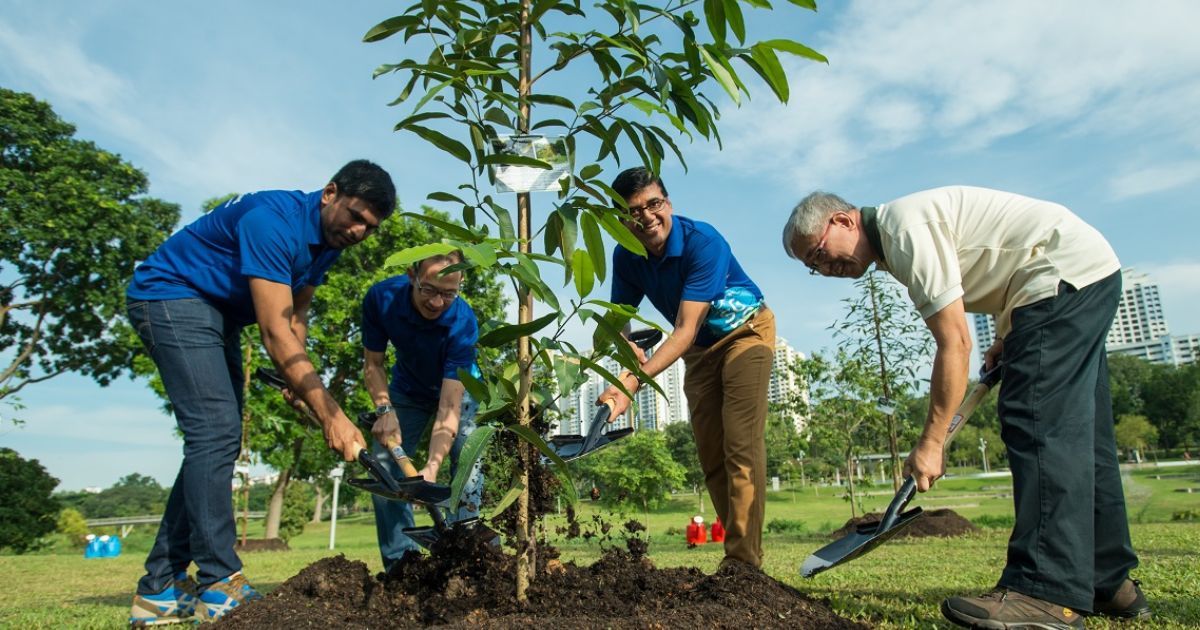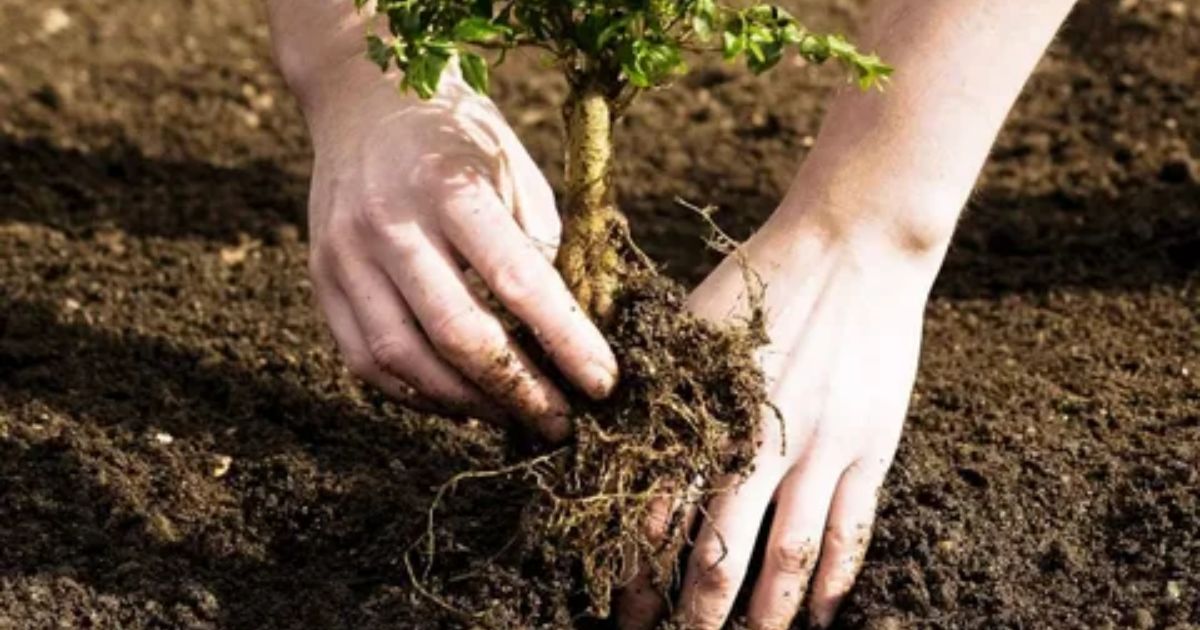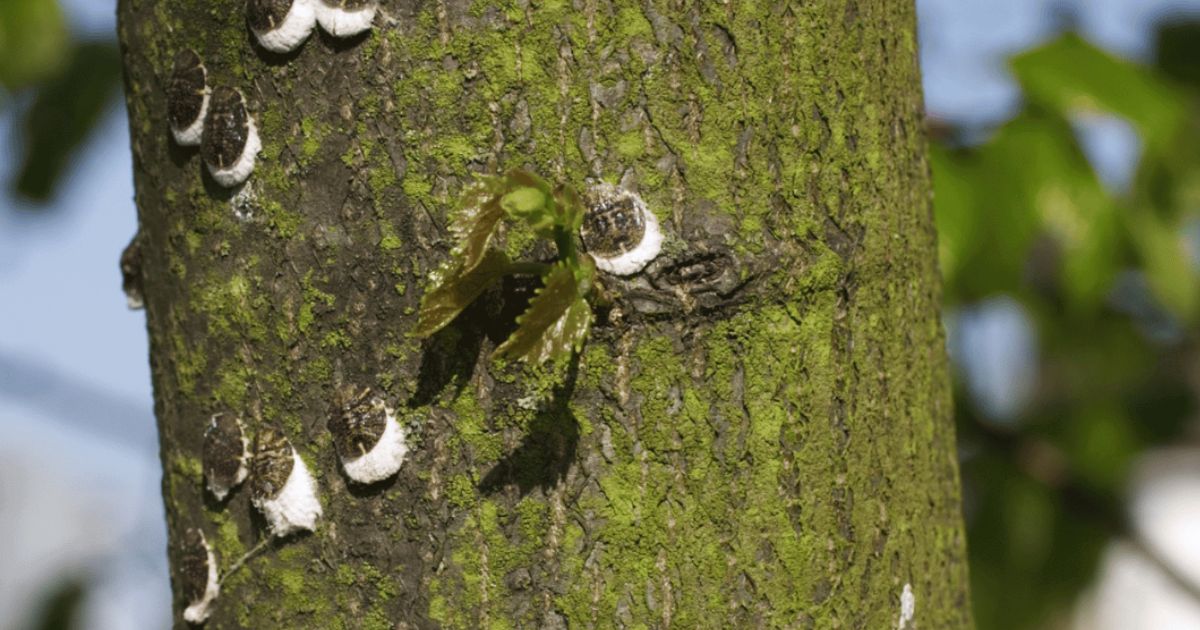Trees are vital to life on Earth and are more than just lovely accents to our surroundings. They sustain animals, reduce carbon dioxide levels, enhance air quality, provide shade, and even help regulate the climate. Whether you plant a tree in your home, a community garden, or a public area, it’s a modest act with a significant impact.However,how do i plant trees is more than just placing a seedling in a hole dug. To ensure it grows strong and healthy, you need to choose the right tree, properly prepare the soil, and provide the care it needs in the early stages.
In this guide, we will walk you through everything you need to know about planting trees, from selecting the perfect species and location to watering, mulching, and long-term care. By following these steps, you can enjoy a thriving tree that brings beauty, shade, and environmental benefits for years to come.
Why Plant Trees?
Beyond their aesthetic appeal, trees provide numerous benefits. In terms of the environment, they store carbon to combat climate change. Up to 48 pounds of CO2 can be absorbed by a single mature tree. Each year. They improve air quality by filtering pollutants like sulfur dioxide and particulate matter, which is particularly crucial in urban settings where air pollution affects millions.On a personal level, trees provide practical advantages. In residential areas, strategically placed shade trees can reduce summertime cooling costs by up to 25%. They also enhance mental health; studies show that proximity to green spaces lowers stress levels and promotes well-being. For communities, Why Fall is the Best Time to Plant Trees tree planting fosters biodiversity, prevents soil erosion, and even boosts local economies through tourism in forested areas.

Moreover, trees play a role in water management. Their roots help absorb excess rainwater, reducing flood risks and improving groundwater recharge. In agricultural contexts, agroforestry integrating trees into farms can increase crop yields by providing windbreaks and enriching soil with organic matter.But why now? With deforestation rates alarmingly high, individual actions matter. Organizations like the Arbor Day Foundation emphasize that planting native species supports local ecosystems. Whether for shade, fruit, or privacy, planting trees is an investment in a sustainable future. Consider the legacy: a tree planted today could outlive you and benefit future generations.In summary, planting trees isn’t just about adding greenery; it’s about creating resilient, healthier environments. As we move into the specifics of how to plant a tree it right, remember that each tree counts toward a greener planet.
Choosing the Right Tree
Selecting the appropriate tree is the foundation of successful planting. Start by assessing your site’s conditions: soil type, sunlight exposure, moisture levels, and space availability. For instance, clay soils suit species like oaks, while sandy soils favor pines.Consider the tree’s mature size. Planting a large species, such as a maple, too close to your home can damage foundations or power lines. Use tools like the USDA Plant Hardiness Zone Map to ensure the tree is suited to your climate. Native trees are often best, as they require less maintenance and support local pollinators and wildlife.
Types of trees include deciduous (leaf-shedding, like birch) for seasonal interest, evergreens (like spruce) for year-round privacy, and fruit trees (like apple) for edible yields. When buying, opt for healthy saplings: look for vibrant leaves, no signs of pests, and a well-developed root system. Avoid trees with circling roots or damaged bark.Budget-wise, smaller saplings (1-2 years old) are cheaper and establish faster than larger ones. Consult local nurseries or extension services for recommendations. For example, in urban areas, pollution-tolerant species like honey locust are ideal.Finally, think about the purpose: shade, windbreak, or ornamental? Researching the growth rates of fast-growing species like poplars yields quick results but may be short-lived. By making wise choices, you set the stage for a thriving tree.
Preparing the Planting Site
Preparation is key to giving your tree the best start. Begin by selecting a location with adequate space for growth, at least 15-20 feet from structures for medium-sized trees. Check for underground utilities by calling 811 before digging.Test soil pH and nutrient levels; most trees prefer slightly acidic soil (pH 6-7). Amend with compost if necessary, but avoid over-fertilizing at planting. Clear the area of weeds and grass in a 3-4 foot diameter circle to reduce competition.Timing matters: plant in early spring or fall when temperatures are mild, allowing roots to establish before extreme weather. In hotter climates, fall planting is preferable to avoid summer stress.
Gather tools: shovel, pruners, gloves, mulch, and stakes if needed. Before planting bare-root trees, let the roots soak in water for a few hours. For container or balled-and-burlapped (B&B) trees, keep them shaded and moist until planting.Dig a test hole to check drainage; poor drainage can rot roots. The Best Containers for Seed Storage If water stands for over 24 hours, consider raised beds or drainage improvements.By thoroughly preparing, you minimize transplant shock and promote healthy root development.
Step-by-Step Planting Process
Now, the hands-on part. Follow these steps for optimal results.
- Dig the Hole: Make it only as deep as the root flare, but two to three times wider than the root ball (where roots meet trunk). Saucer-shaped holes encourage lateral root growth. Roughen the sides to prevent glazing.
- Prepare the Tree: For container trees, gently remove from the pot and tease out circling roots. For B&B, cut away the top burlap and wire after positioning. Bare-root: prune damaged roots and spread them out.
- Position the Tree: Place it so the root flare is slightly above ground level, 1-2 inches above ground level to account for settling. Ensure it’s straight; have a helper check from multiple angles.
- Backfill with native soil, avoiding amendments unless the soil is poor. Fill halfway, water to settle, then complete. Tap gently to eliminate air pockets, but don’t compact.
- Water Thoroughly: Soak the root zone with 10-15 gallons of water, slowly to allow it to penetrate deeply. This initial watering is crucial for hydration.
- Mulch: Apply 2-4 inches of organic mulch in a 3-foot ring, keeping it 2-3 inches from the trunk to prevent rot.
- Stake if Necessary: Only for windy sites or top-heavy trees; use flexible ties and remove after one year.
This process, Tree care tips when done carefully, ensures a strong establishment. Step-by-Step Guide to Cutting Back a Cherry Tree For larger trees, consider professional help to avoid injury.
Aftercare and Maintenance

Post-planting care determines long-term success. Water deeply but infrequently, 1 inch per week for the first year, adjusting for rainfall. Use a slow-drip system to encourage deep roots.Mulch every year to keep moisture in and prevent weed growth. Prune only dead or crossing branches in the first few years; major pruning waits until established.Keep an eye out for illnesses and pests; prompt action stops their spread. Fertilize sparingly after the first year if growth is slow, using slow-release options.Protect from animals with guards or fencing. In winter, wrap trunks to prevent sunscald in young trees.Regular inspections ensure issues are caught early. With proper aftercare, your tree will flourish, providing benefits for decades.
Common Mistakes to Avoid
Planting a tree may seem simple 7 Tips for Tree Disease Black Spots Leaves , but small mistakes can have long-term effects on its growth and survival. Here are some common errors to watch out for:
Tree planting guide Too Deep or Too Shallow
- The tree’s root flare (where the roots meet the trunk) should be at ground level.
- Planting too deeply can suffocate roots and lead to rot, while planting too shallow can expose roots and make the tree unstable.
Overwatering or Underwatering
- Young trees need consistent moisture, but too much water can drown roots and encourage disease.
- Too little water can stress the tree and stunt its growth. Constantly monitor soil moisture and adjust according to the season.
Ignoring Soil Preparation
- Planting in compacted or poor soil without loosening it or adding organic matter can limit root growth.
- Make sure the soil has enough nutrients and drains well to provide your tree with the best start.
Neglecting Mulch and Protection
- Mulch helps retain moisture and control weeds, but piling it against the trunk (volcano mulching) can cause rot.
- Protect young trees from pests, lawn equipment, and harsh weather with stakes or guards, as needed.
Wrong Location or Spacing

- Don’t plant too near other trees, buildings, or walkways.
- Consider the tree’s mature size to avoid crowding or interference with infrastructure.
Skipping Early Pruning and Maintenance
- Failing to prune correctly can lead to weak branches or poor shape.
- Regular monitoring for pests, diseases, and growth issues ensures a healthier, stronger tree.
By avoiding these common mistakes, When to Prune Pear Trees you give your tree the best chance to thrive and become a lasting part of your landscape.
Conclusion
Planting a tree is more than just a gardening activity; it’s an investment in the environment, your community, and future generations. By carefully choosing the appropriate tree, preparing the soil, planting correctly, and providing ongoing care, you can ensure your tree grows strong and healthy.Remember, even small actions like proper watering, mulching, and avoiding common mistakes can significantly improve a tree’s survival and growth.
Each tree you plant contributes to cleaner air, cooler surroundings, and a greener, more sustainable world.So grab a sapling, follow these steps, and help create a thriving, leafy future. With patience and care, your tree will not only grow but also flourish, standing as a lasting symbol of life and environmental stewardship.
FAQ
How long does it take for a tree to grow?
The growth rate depends on the species, soil quality, climate, and care. Fast-growing trees like willows or poplars can grow several feet per year, while slow-growing trees like oaks or Japanese maples may take decades to reach full maturity.
Can I plant trees in any season?
The best time to plant most trees is during the dormant season, late fall or early spring, when the tree isn’t developing. However, with proper watering and care, trees can also be planted in summer or winter, depending on your climate.
How do I know if my tree is healthy?
Healthy trees have vibrant green leaves (or needles) and robust stems with no signs of illness or pests. Wilting, discoloration, or unusual leaf drop can indicate stress or problems that need attention.
How often should I water a newly planted tree?
New trees generally need deep watering 2–3 times per week during the first few months, depending on rainfall and soil type. Gradually reduce watering as the tree establishes roots. Always check soil moisture before watering.
Do I need to fertilize my tree?
Fertilizing is optional if your soil is rich in nutrients. If needed, use a slow-release, balanced fertilizer in early spring to promote healthy growth. Avoid over-fertilizing, which can harm the tree.





